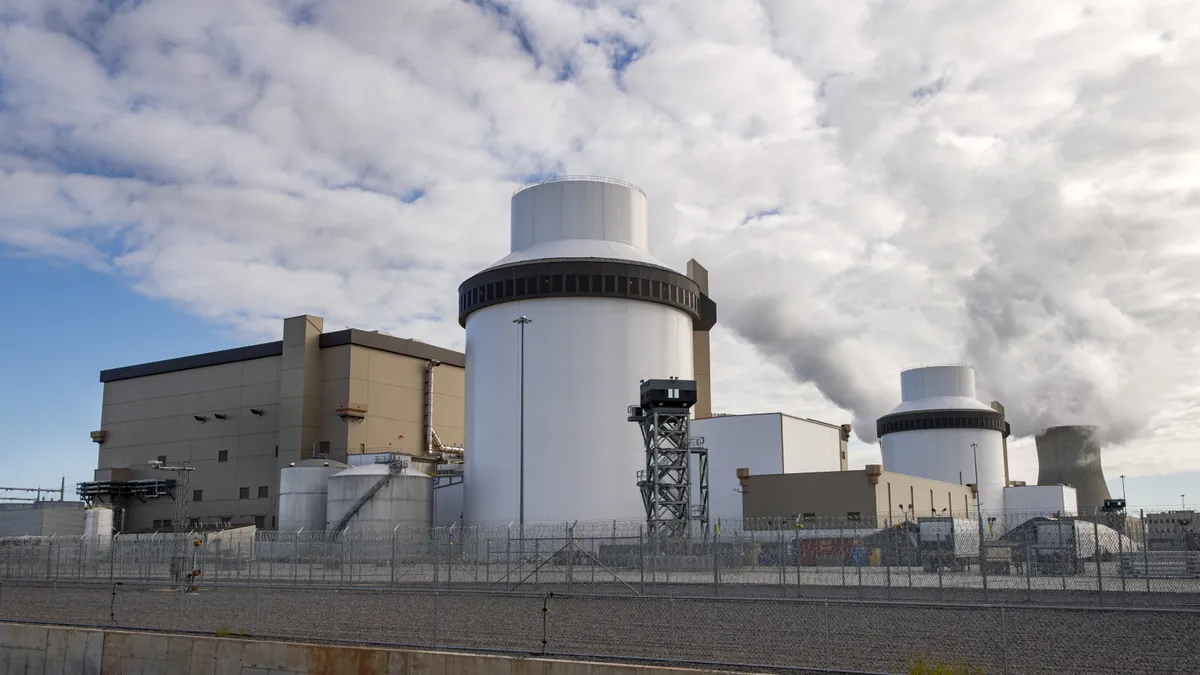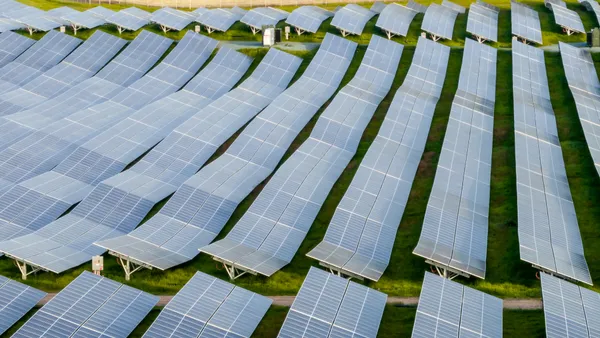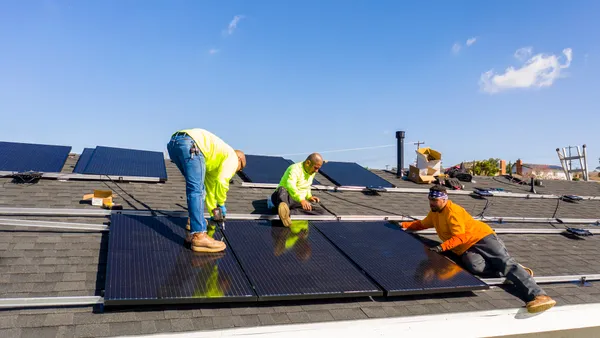Dive Brief:
-
Solar and energy storage remain the cheapest options for meeting growing electric demand as costs and development timelines for new natural gas plants grow, NextEra Energy President and CEO John Ketchum said during a Wednesday morning earnings call.
-
The cost to build a new natural gas plant has already tripled in the last few years and could increase even further due to new tariffs, Ketchum said. He later added during a Q&A with analysts that the time to build a new natural gas plant has grown from four and a half years to six or more years.
-
NextEra Energy has secured contracts for solar and battery storage supply chains that will largely avoid the tariffs' impacts, which could give the company a considerable advantage over its competitors, Ketchum said.
Dive Insight:
With energy demand set to grow at a rate “unlike anything we've ever seen since the end of World War II,” Ketchum said, the U.S. must remain realistic and pragmatic about its energy policies — and that those policies must include renewables and battery storage.
“America is going to need all forms of energy to meet this enormous demand,” Ketchum said. “But we need to be practical about when technologies will be available at scale and how much they'll cost when they show up — all of which factors into how much Americans pay on their electric bill each month. That is why energy policy in Washington is so important, and why we cannot isolate ourselves to just a couple of technologies, like gas and nuclear, which are much more expensive than they've ever been and take far longer to build.”
Ketchum estimated that the U.S. could need 450 GW of new generation by 2030. Small modular nuclear reactors are “still 10 years away at scale in the best scenarios,” he said, and the opportunities to restart existing nuclear reactors are limited. Postponing the retirement of every coal plant in America would only add 40 GW to the grid, he added, and new natural gas generation will likely total just 75 GW by 2030 due to growing challenges in that sector.
In addition to anticipating rising costs and the limited availability of new natural gas turbines, Ketchum said that NextEra Energy expects much longer development timelines for new natural gas plants, in part due to shortages of workers with the niche skills needed for building new gas plants. High turnover among these workers has added to the challenge, he said. He attributed the turnover to workers leaving the industry for high-paying jobs in other industrial facilities.
Ketchum also told analysts that U.S. tariffs on imports may hit new natural gas generation harder than they will other generation technologies. He estimated that tariffs have increased the cost of new gas generation from $2,400 per kW to $2,600-2,800 per kW.
Renewable projects — at least those NextEra develops — should not see the same impact, Ketchum said. The company's wind turbines are all made in the U.S., and the company has expanded and diversified its solar supply chains in ways that should allow it to avoid most of the tariffs announced to date by the Trump administration, Ketchum said. Where the company cannot avoid the tariffs, he said, it has clauses in its contracts that make its suppliers responsible for paying them.
NextEra also fortuitously entered into a contract last year securing U.S.-made batteries for a significant portion of its energy storage projects, Ketchum said. Although he said this was done to secure the domestic content tax credits the Inflation Reduction Act created, he noted that it would now reduce the company's exposure to tariffs as well. And the tax credits the contract earns will offset the cost of any tariffs associated with battery components the company's suppliers may still need to import, he said.
Previous rounds of tariffs saw numerous small energy developers around the country that “blew themselves up” when they couldn't follow through on existing commitments, Ketchum said. Some of those developers’ former customers later sought the services of NextEra, he said.
“I look at this as a huge opportunity for us because we compete against a lot of small developers, and they don't have the buying power or the leverage in contracts to be able shift risk like we can,” he said. “We didn't just wake up on Nov. 6 and say, ‘Oh my God, what do we do about our supply chain?’”













